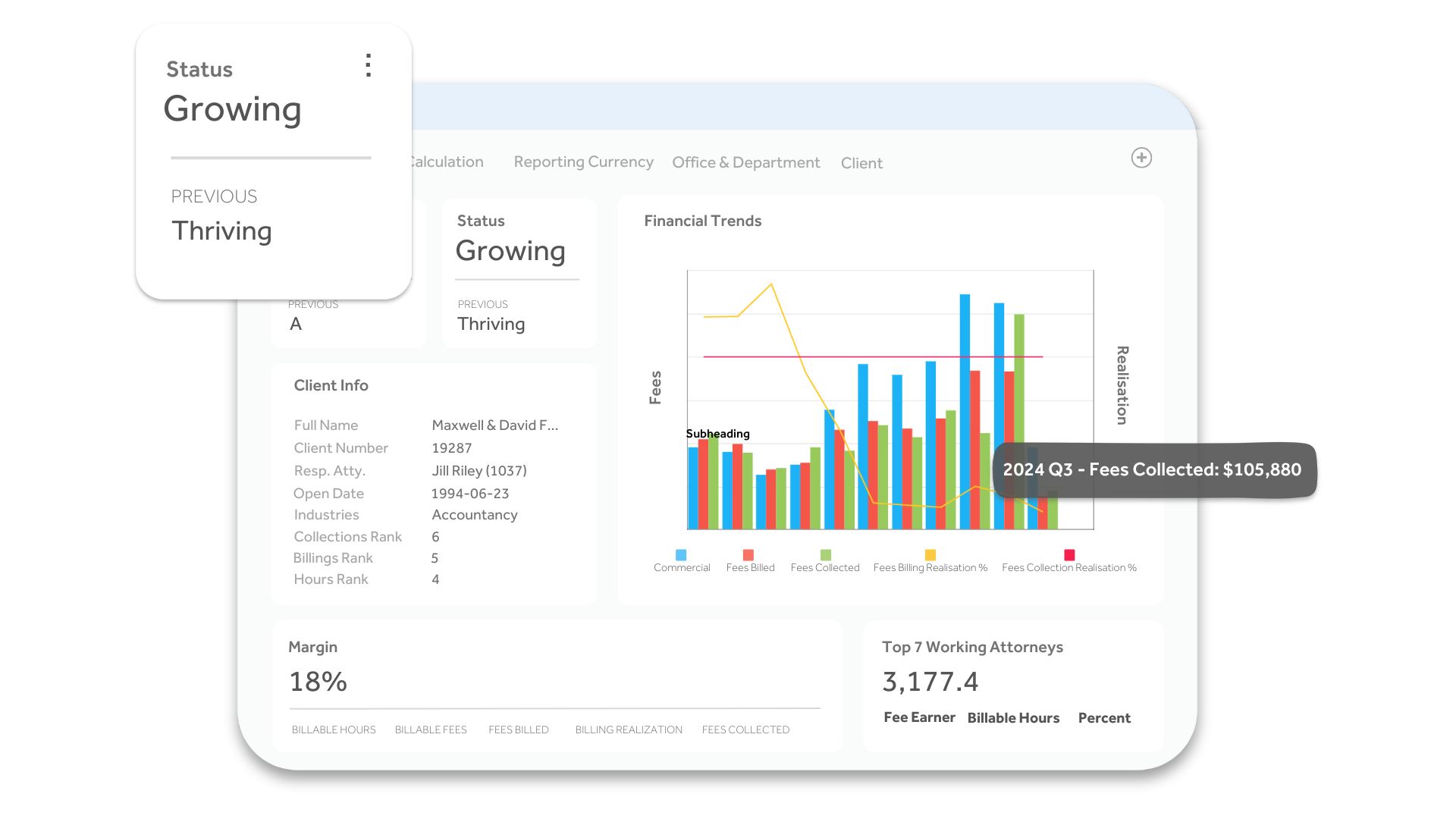Lawyers, now more than ever, need to see themselves as businesspeople. It is their knowledge and expertise the firm is selling and to be a profitable and growing business, lawyers need to build a more commercial mindset.
However, this is increasing pressure on lawyers as many still juggle non-billable responsibilities with their billable work with 14% spending three to four hours each week on business development and 6% spending more than five hours. In addition, 40% are focusing on cross-selling between practice areas.
To drive growth, firms must foster cross-department collaboration, where lawyers work strategically alongside finance, business development, and marketing teams. Access to actionable data supports efforts to build this needed culture shift as lawyers can be more adept at spotting business development opportunities with existing clients. Lawyers who embrace this shift will become not only more valuable to their firms but also stronger candidates for future leadership roles.
Building a Stronger Future with Cross-Firm Collaboration
Data provided by the Business Development (BD) module in the latest version of BigHand Business Intelligence allows lawyers to prioritize client portfolios based on profitability and business growth strategies. Breaking down silos between lawyers and BD teams ensures the firm can attract the right clients and pursue high-value opportunities.
There is a real possibility of burning out lawyers if the expectation of having a more commercial mindset is not properly supported. Providing lawyers and finance teams with the right tools to identify high-value opportunities easily supports stronger collaboration across the firm and provides much needed support to alleviate the pressure.
Cross-practice collaboration also opens internal referral opportunities, strengthening both client relationships and firm culture. Lawyers who build internal networks are better equipped to identify cross-sell opportunities, ensuring that clients benefit from the full range of the firm’s expertise. Many firms have added this to their growth strategies with 40% of law firms focusing on more cross-practice referrals in the next 12 months.
The Skill Gap: Lawyers as Strategic Advisors
Lawyers are increasingly expected to function as trusted advisors, offering strategic insights to clients beyond legal counsel. By accessing real-time data on client needs, lawyers can anticipate challenges and proactively address them. This shift transforms them from reactive service providers to proactive partners.
This transition, however, will not happen overnight. Law firms must address the skills gap that exists, as not all lawyers are naturally inclined toward BD activities. Encouragingly, 88% of law firms report investing in training programs to enhance commercial awareness among their lawyers, signaling the importance of this shift.
Developing these skills is not just about client satisfaction—it also enhances career trajectories. Lawyers who demonstrate commercial awareness and BD competence become prime candidates for leadership roles. In fact, as fewer lawyers aim for traditional partnership, those with a blend of legal and business skills will stand out in career advancement.
Aligning Business Intelligence with Law Firm Growth
BigHand Business Intelligence’s Business Development module enables firms to align their finance, marketing, and legal teams, ensuring they pursue the right work and maintain profitability. With BigHand, firms have access to a business development dashboard that empowers lawyers by:
- Monitoring client health by analyzing accounts for profitability, billing consistency, and other performance indicators, so firms can identify which client relationships are thriving and which may pose future risks.
- Pinpointing cross-sell opportunities to expand client engagement across various practice groups and drive internal collaboration to open up avenues for growth without requiring an influx of new clients.
- Reducing manual BD efforts by automating data aggregation, analysis, and reporting, ensuring that lawyers and BD teams have quick access to actionable insights, giving lawyers more time for billable work.
BigHand Business Intelligence ensures lawyers can focus on high-value activities while driving business growth—an essential combination for future-proofing the firm.
Conclusion
The evolving legal landscape demands a new approach to success. Built on the latest 4.0 version of BigHand’s marketing-leading business intelligence software, the Business Development dashboards are available on-premise or in the cloud to help firms easily monitor client health and identify the best opportunities for business growth, without compromising billable hours targets. By adopting this solution, law firms can strategically position themselves for success.
To learn more about the benefits the new Business Development module in the 4.0 version of BigHand Business Intelligence brings law firms, register for the product webinar here.







